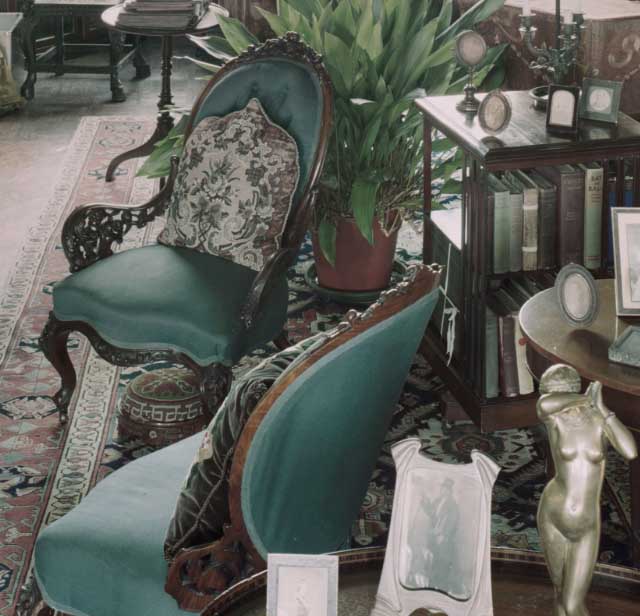18 Stafford Terrace (Linley Sambourne House)
From 1875, 18 Stafford Terrace was the home of Punch cartoonist Edward Linley Sambourne, his wife Marion, their two children and their live-in servants. The house gives an insight into the personal lives of the Sambourne family, and also provides a rare example of what was known as an 'Aesthetic interior' or 'House Beautiful' style.
The Aesthetic Movement of the late nineteenth century advocated the use of foreign or 'exotic' influences in the decoration of the home. This can be seen by the various Japanese, Middle-Eastern and Chinese objects throughout the Sambournes' home. After the deaths of Linley and Marion Sambourne, the house was preserved by their descendants. In 1980 it was opened to the public by the Victorian Society. This organisation had been inaugurated at 18 Stafford Terrace in 1958 by the Sambourne's grand-daughter, Anne, 6th Countess of Rosse. In 1989, its ownership passed to the Royal Borough of Kensington and Chelsea.
In 1874 Edward Linley Sambourne married Marion Herapath, the daughter of a wealthy stockbroker. Helped by Marion's father, the couple paid £2,000 for an 89-year lease on 18 Stafford Terrace. Classical Italianate in style, Stafford Terrace was built in the 1870s as part of the new developments on the Phillimore Estate. The inhabitants of Stafford Terrace, as listed in the 1871 census, were professional men including retired officers, senior civil servants, tradesmen etc.
The arrival of an artist at number 18 was a novelty. The young couple decided to furnish their home in the fashionable 'aesthetic' or artistic style of the period. They lived in the house for the next 36 years and, although they made some alterations, the basic decorative scheme remains the same today.
Linley Sambourne (1844-1910) was born in Clerkenwell, London as the only child of Edward Mott Sambourne, and his wife Frances Linley. He had a life long passion for drawing. He developed many styles and excelled at the grotesque and fanciful caricature of people and animals. He began working for the popular satirical magazine Punch in 1867 when he was just 23, and continued to contribute weekly until the year before his death. He illustrated many books, including the 1885 edition of Charles Kingsley’s Water Babies, and a collection of Hans Christian Anderson’s fairy tales.

